Dal Negro Bridge set
Dal Negro Bridge set featuring old Vienna pattern courts.
Dal Negro’s boxed Bridge set features a 19th century Vienna pattern court (which in turn has earlier French ancestry). From time to time regional patterns from one area migrate or are exported to others. In this case a pattern used in Austria has been produced in Italy to be used as a standard French-suited deck with English indices. The maker’s name appears on the king of spades’ sash. The jack of clubs carries a corrupt version of an ancient weapon. The back designs show classical Roman antiquities. See the Box►
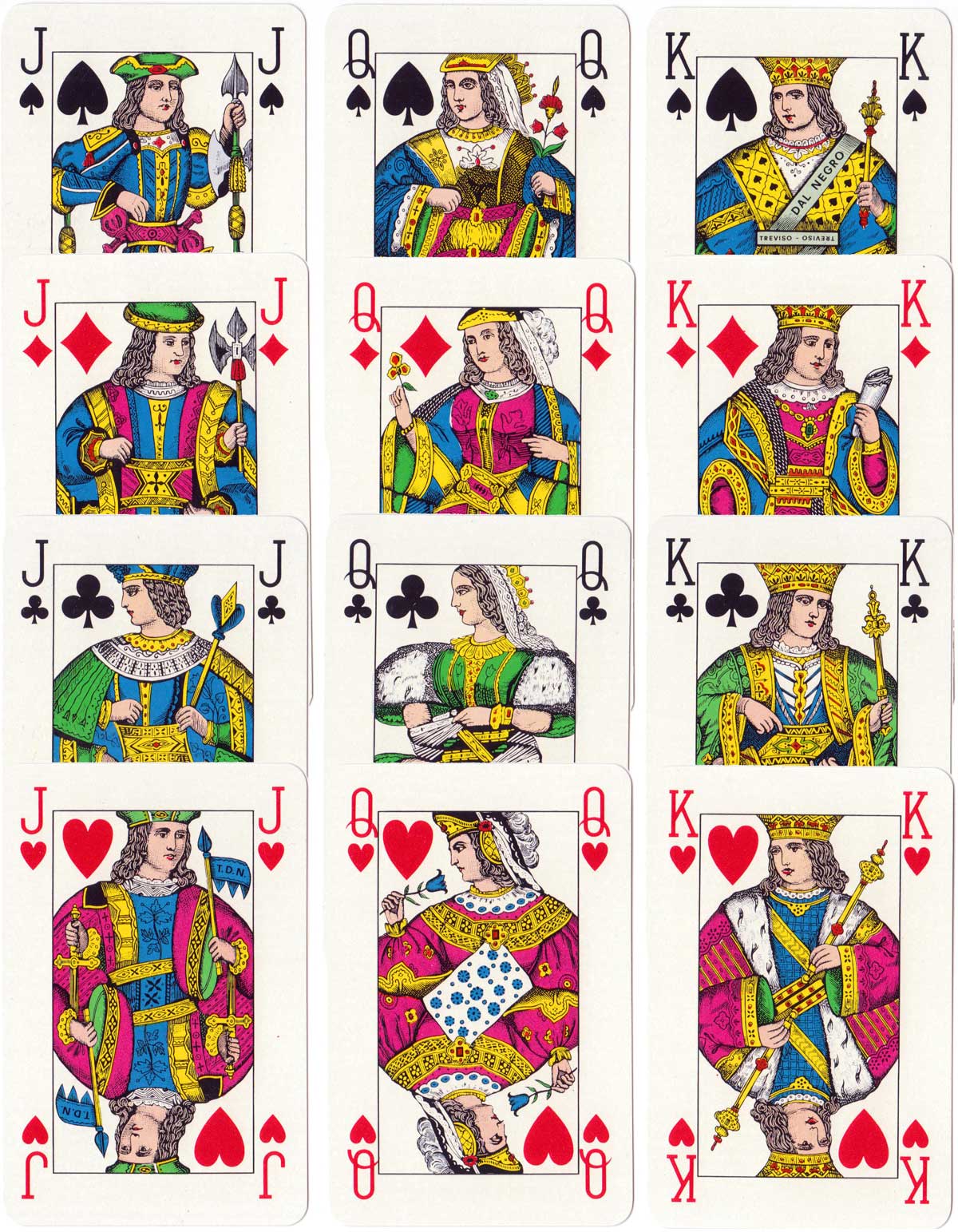
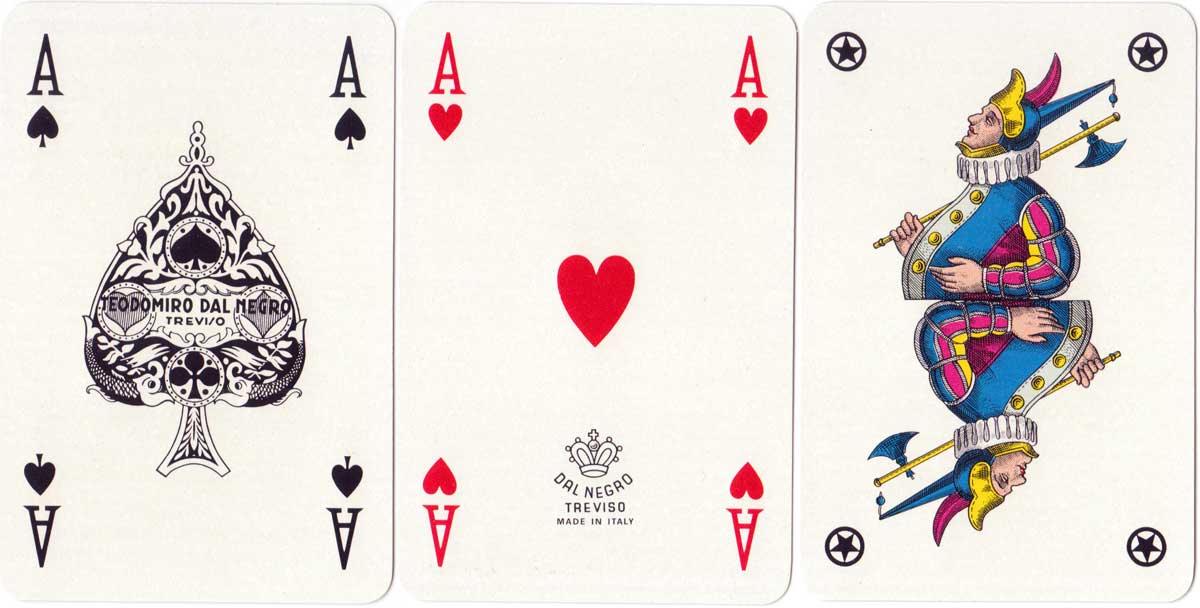
Above: Bridge set featuring a 19th century Vienna pattern on the courts, made by Dal Negro, Treviso, 1970s. The kings and queens of hearts and diamonds have exchanged suits from earlier prototypes. The jack of hearts holds a small flag with the manifacturer's initials T.D.N. Double boxed set containing 2 x [52 cards + 2 jokers + bridge scores card]. Images courtesy Rex Pitts.
Right: three cards from mid-19th century Vienna pattern made in Austria by C. Titze & Schinkay showing the original queen and king of hearts which now appear as diamonds.
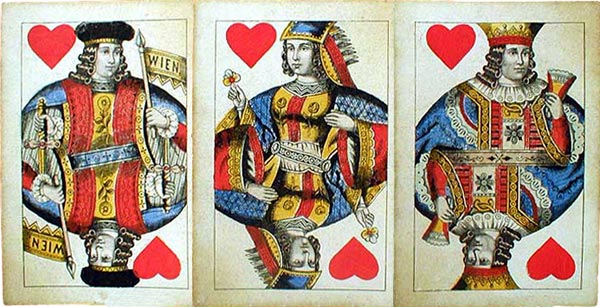
There is a tenuous connection between Dal Negro and Austria. The company was originally founded by an Austrian and acquired by the Dal Negro family in 1928 more →
By Rex Pitts (1940-2021)
United Kingdom • Member since January 30, 2009
Rex's main interest was in card games, because, he said, they were cheap and easy to get hold of in his early days of collecting. He is well known for his extensive knowledge of Pepys games and his book is on the bookshelves of many.
His other interest was non-standard playing cards. He also had collections of sheet music, music CDs, models of London buses, London Transport timetables and maps and other objects that intrigued him.
Rex had a chequered career at school. He was expelled twice, on one occasion for smoking! Despite this he trained as a radio engineer and worked for the BBC in the World Service.
Later he moved into sales and worked for a firm that made all kinds of packaging, a job he enjoyed until his retirement. He became an expert on boxes and would always investigate those that held his cards. He could always recognize a box made for Pepys, which were the same as those of Alf Cooke’s Universal Playing Card Company, who printed the card games. This interest changed into an ability to make and mend boxes, which he did with great dexterity. He loved this kind of handicraft work.
His dexterity of hand and eye soon led to his making card games of his own design. He spent hours and hours carefully cutting them out and colouring them by hand.

Leave a Reply
Your Name
Just nowRelated Articles
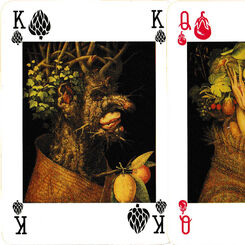
Le carte da gioco Arcimboldo
Courts and suit-signs inspired by the works of the Italian Renaissance painter, Giuseppe Arcimboldo....
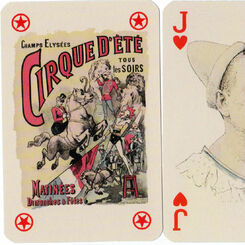
Il Circo
Il Circo illustrated by Jules Garnier, published by Lo Scarabeo, 2004.
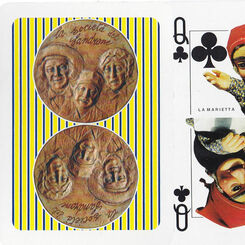
Baracca & Burattini
Baracca & Burattini puppetry deck printed by Dal Negro, 1998.

Kaffeehaus-Pikett
Kaffeehaus-Pikett featuring the old Viennese Large Crown pattern, made by ASS.
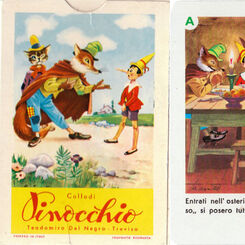
Le Avventure di Pinocchio
Avventure di Pinocchio by Dal Negro, based on Carlo Collodi’s famous 1883 novel “The Adventures of P...
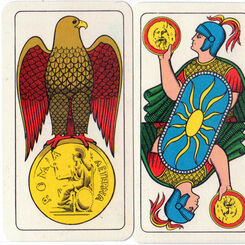
Carte Romane
“Carte Romane” designed by Giorgio Pessione, 1973, celebrating the history of Rome.
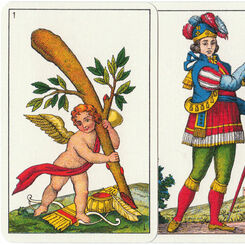
Sarde Pattern
Sarde pattern published by Modiano, c.1975, based on early XIX century Spanish model.
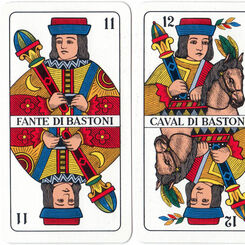
Triestine Pattern
The Triestine pattern is derived from the Venetian (Trevisane) pattern but with its own characterist...

Trentine Pattern
Trentine Pattern

Primiera Bolognese
Primiera Bolognese by Modiano, c.1975

Bergamasche Pattern
Bergamasche Pattern by Modiano, 1970s.

Genovesi Pattern
Genoese pattern from Italy.
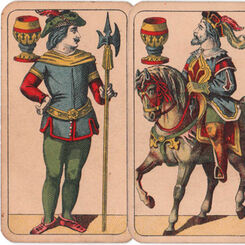
Fantasy Italian style
Fantasy latin-suited pack with court figures in pseudo-medieval style, Fratelli Armanino, Genova, c....
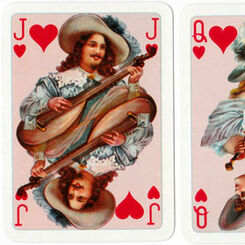
Club Bridge
Modiano’s ‘Club Bridge’ is a new edition of a stylish deck originally published in c.1895.
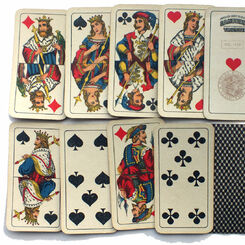
Lombardy (or Milanesi) pattern
The origins of the Lombardy pattern probably lie in the early 19th century when it was a full-length...
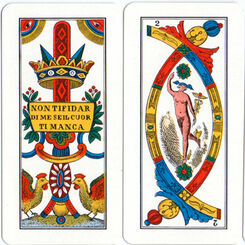
Trevisane pattern
The double-ended version of the ‘Trevisane’ pattern originated in the early 19th century.

Florentine Pattern
Originally one of several designs which emerged during the nineteenth century, the Florentine patter...
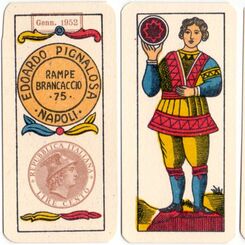
Brescia pattern
The Brescia pattern contains elements which come from a past age.
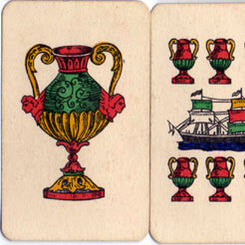
Sicilian Pattern
The Sicilian pack has a similar composition to the Neapolitan pack, and is small and squat in appear...

Neapolitan Pattern
Cartine da Gioco Vesuvio miniature Neapolitan pattern.
Most Popular
Our top articles from the past 60 days


 Your comment here. Your comment here. Your comment here. Your comment here. Your comment here. Your comment here. Your comment here. Your comment here. Your comment here. Your comment here. Your comment here. Your comment here. Your comment here. Your comment here. Your comment here. Your comment here. Your comment here. Your comment here. Your comment here. Your comment here. Your comment here. Your comment here. Your comment here. Your comment here. Your comment here. Your comment here. Your comment here. Your comment here. Your comment here. Your comment here. Your comment here. Your comment here.
Your comment here. Your comment here. Your comment here. Your comment here. Your comment here. Your comment here. Your comment here. Your comment here. Your comment here. Your comment here. Your comment here. Your comment here. Your comment here. Your comment here. Your comment here. Your comment here. Your comment here. Your comment here. Your comment here. Your comment here. Your comment here. Your comment here. Your comment here. Your comment here. Your comment here. Your comment here. Your comment here. Your comment here. Your comment here. Your comment here. Your comment here. Your comment here.




















